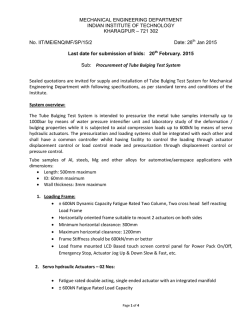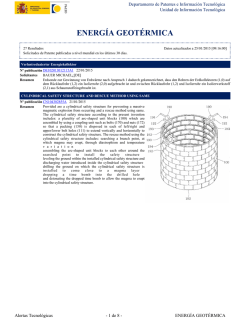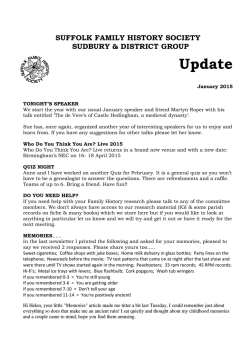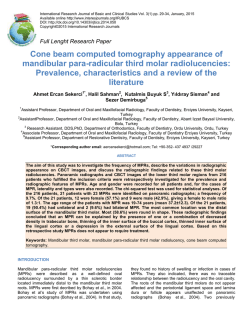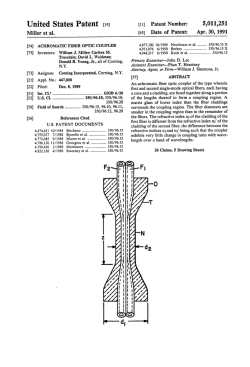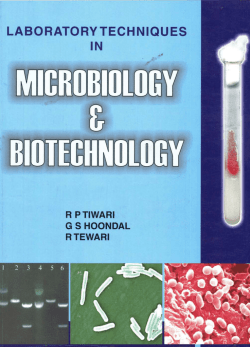
Properties of a Volatile Liquid
LAD J.1 (pg 1 of 5) Properties of a Volatile Liquid Name_________________Per___ PreLAD Read the following introduction, do the preLAD questions that follow and develop a data/results table. Introduction In a chemistry lab, observation and measurement of physical properties of substances are still very important. In this LAD we will measure three properties of a volatile liquid: A. Boiling point (temperature) B. Density C. Molar Mass A. Boiling Point • The temperature at a substance converts to a gas from a liquid throughout the bulk of the liquid is called its boiling temperature. This is a characteristic property, useful as an aid to identify a substance. A liquid may change to a gas at temperatures below the boiling point through the process of evaporation. Any change of state from a liquid to a gas at boiling point is considered vaporization, however, evaporation is a surface phenomenon in which only molecules located near the gas/liquid surface could evaporate. Boiling on the other hand is a bulk process, so at the boiling point molecules anywhere in the liquid may be vaporized, resulting in the formation of vapor bubbles. • Another way to define boiling, is the temperature at which the vapor pressure of the liquid equals the atmospheric pressure above the liquid. This principle will be demonstrated in this method of determining boiling point. B. Density • Like boiling point, density is also a characteristic property, and is also helpful for identifying a substance. Recall that density is mass per volume, so measuring the mass of a particular volume allows for the density calculation. C. Molar Mass • The most common instrument used to determine molar masses in modern chemical research is the mass spectrometer. Such an instrument permits very precise determination of molar mass, however, mass spectrometers are extremely expensive and take a great deal of time and effort to calibrate and maintain. For this reason, many classical methods of molar mass determination are still widely applied. In this experiment a common modification of the ideal gas law will be used in the determination of the molar mass of a liquid that is easily evaporated. • If the substance in question is a volatile liquid, a common method to determine its molar mass is to vaporize it and apply the ideal gas law, PV = nRT to the data collected. Because the liquid is volatile, it can easily be converted to a vapor. Volatile substances are usually composed of nonpolar molecules. As a result the molecules have primarily London dispersion forces, which can be the weakest intermolecular forces, and very little thermal energy is required to overcome these attractive forces. Therefore, the liquid vaporizes easily and quickly at temperatures less than 100°C. While the substance is in the vapor phase, you can measure its volume, pressure, and temperature. You can then use the ideal gas law to calculate the number of moles of the substance. Finally, you can use the number of moles of the gas to calculate molar mass. • A small amount of a volatile liquid will be placed in a flask of known volume. The flask will be heated in a boiling water bath and will be allowed to equilibrate to atmospheric pressure. From the volume of the flask used, the temperature of the boiling water bath, and the atmospheric pressure, the moles of vapor inside the flask can be calculated. The mass of the vapor will be determined after the vapor is allowed to cool and condenses back into a liquid inside the flask. • A major assumption is made in this experiment that may affect the results. We assume that the vapor of the liquid behaves as an ideal gas, however, as a vapor approaches the conditions near which it will condense, the vapor will behave less and less like an ideal gas. The liquids in this experiment are specifically chosen so that their vapor will best approach ideal gas behavior. LAD J.1 (pg 2 of 5) Properties of a Volatile Liquid Materials • • • • • • • 0.0001 balances, ice bath 2x hotplate 2x thermometer several rubber bands 2x T3 - tiny test tubes 2x larger test tube 2x test tube clamp volatile liquid • • • • • • 2x 1000 ml beaker for water bath 2x dropper pipet aluminum foil & pin for punching hole in foil tissues 250 ml beaker for weighing water Large beaker of ice water PreLAD Questions 1. What is the difference between vapor and gas? Trial 1 7.5228 g Temperature of water bath (ºC) 99.0°C Mass of test tube and foil cover and condensed alcohol (g) 7.5387 g Barometric pressure (atm) 0.987 atm Mass of test tube and foil and water (g) 16.1228 g 2. A student performs an experiment designed to experimentally Mass of test tube and foil cover (g) determine the molar mass of methyl alcohol (CH3OH). The data to the right was collected: a. Determine the mass of the condensed unknown. b. Assuming the density of water to be 1.00 g/ml, determine the volume of the test tube. c. Starting with the ideal gas law, substitute the fact that n is equal to grams/molar mass and then derive a formula for calculating the experimental molar mass of the student’s volatile liquid sample. d. Calculate the experimental molar mass for this student’s sample. e. Calculate the percent error for this student’s experiment. LAD J.1 (pg 3 of 5) Properties of a Volatile Liquid Part A − Procedure to Determine the Boiling Point: 1. Prepare a water bath by filling a 600 ml beaker ¾ full and set on a hot plate to warm. 2. Attach a thermometer to a test tube as shown with two rubber bands. Note that the tip of thermometer is at the bottom of the tube, but not below. 3. Pour the minimum amount of volatile liquid into your large test tube that will be high enough to completely cover a tiny test tube (T3) that will be dropped mouth down into the volatile liquid. 4. Drop the T3 open mouth facing downward into the test tube with the volatile liquid. Although it will probably float, there must be enough volatile liquid in the test tube to completely cover the T3. 5. Heat the water until there is a constant stream of bubbles flowing out of the T3, then remove the water bath with the test tube set-up still in the bath. 6. Allow the bath to cool while observing the stream of bubbles slow, stop, and then volatile liquid will push up into the T3. Read the temperature just as the liquid starts to push up into the T3. This is the temperature at which the vapor pressure of the liquid equals the air pressure. This is the boiling temperature. Do NOT throw away the volatile liquid. Pour it back into the container on your tray. Part B − Procedure to Determine Density: 1. Measure the mass of a 25 ml volumetric flask. 2. Fill the volumetric flask with the volatile liquid up to the etched line on the neck that indicates 25 ml. Use the dropper if necessary to be sure that the bottom of the meniscus is at the etched line. 3. Be sure and wipe any dripped liquid off the outside of the flask, then determine the mass of the volumetric flask and liquid. Part B - Processing the Data: • Calculate the mass of the volatile liquid. Then calculate the density. Part C − Procedure to Determine Molar Mass: 1. Determine the mass of the test tube, then trim a piece of aluminum foil to just cover the top of the test tube. Use the pin to poke a small hole in the center of the foil cover. 2. Prepare a large beaker with an appropriate amount of water (Be sure and check your test tube in the beaker so the test tube will be covered as much as possible with water yet the beaker does not overflow.) and a hot plate to use for a boiling water bath. Set up a ring stand with clamp to secure the top of the test tube when it is submerged into the boiling water. 3. Squirt approximately 0.5 ml (about 10 drops) of the volatile liquid in your test tube and recover with the foil, then immerse the test tube with its foil cover on, down into the barely boiling water bath as deep as possible. Watch the liquid in the test tube carefully. It will begin to evaporate rapidly. Even this small amount of liquid placed in the test tube is much more than is necessary to fill the test tube with its vapor, so with careful observation, you will see excess vapor escaping through the pinhole made in the foil. We will assume that all the air in the test tube is driven out with the excess vapor leaving the test tube with only volatile liquid vapor in it at room pressure. (We assume it is at room pressure because the flask is not sealed and any extra pressure can push out through the pin hole in the foil.) 4. Record the temperature of the boiling water bath. 5. After it appears that all of the volatile liquid has vaporized, wait approximately 3 minutes, and then remove the flask from the boiling water bath. Make a quick check to see if the liquid inside has all vaporized. If it has not, replace the test tube back into the water bath. If it has all vaporized, quickly plunge the test tube into the ice water bath on the center lab bench. Be careful not to get the top of the very top of the test tube and the foil cover wet. Liquid will reappear in the test tube as it cools. 6. Carefully dry the outside of the test tube, carry it to the balance, remove the foil, wipe again, then mass the test tube and condensed volatile liquid inside. 7. Determine the volume of the test tube by removing the foil, filling the test tube with water and then weighing the mass of that water by dumping it carefully into a tared beaker. 8. Record the barometer pressure which has been recored on the whiteboard from a local weather station. Part C - Processing the Data: • Rewrite the formula you derived in PreLAD question #2c. • Using the formula above, solve for the experimental molar mass of the volatile liquid. • After determining the identity of the volatile liquid, calculate the theoretical molar mass and calculate % error. LAD J.1 (pg 4 of 5) Properties of a Volatile Liquid Post-LAD Questions − Part C Molar Mass 1. Why did we not measure the mass of the liquid before we put it into the flask, and it does it not matter exactly what volume of liquid is first placed in the flask? 2. Would the molar mass of the volatile liquid be larger, smaller or no change if..... (Justify your answer by stating what measurements and subsequent calculations would change (↑ or ↓), be specific.) a. only half of the test tube was submerged below the surface of the boiling water. b. the mass of the test tube was taken too quickly and not submerged in the ice water bath water. c. the mass of the condensed liquid was not determined quickly enough and the test tube was allowed to stand for a while with the foil cover off, before measuring its mass. d. a student failed to vaporize the entire sample prior to placing the test tube in the ice bath. e. you forgot to dry the outside of the test tube prior to massing it after the vapor condenses back into liquid. f. you had used twice the initial amount of the unknown volatile liquid? LAD J.1 (pg 5 of 5) 3. Properties of a Volatile Liquid The effect of intermolecular forces on this procedure a. What does boiling point tell us about the strength of IMFs of a substance? b. Reread the 4th bullet point under the molar mass introduction before answering this question. One of the fundamental principles of the ideal gas law is that the gas particles have no IMFs - this of course not really true for real gases. The vapor is not really “ideal.” Consider the molecular structure of the chemical we tested. What type of IMFs would you expect it to have? c. Would the presence of IMF’s make the calculated molar mass larger or smaller? Be specific about what measurements would be different (higher or lower) and how that manifests in the final molar mass calculation. d. Would you expect that using this procedure with volatile liquids with larger or smaller molar masses would result in lower percent error? Explain. e. Some liquids have strong enough IMFs to form dimers. (Dimers are molecules that are formed from two identical molecules combining into one molecule.) If this were to occur with your volatile liquid in both the liquid and gas phase (yet you were unaware of this occurring), how would that affect the molar mass? Would the experimentally determined molar mass be larger or smaller, or the same as the theoretical molar mass? Post-LAD Questions - Part B Density 4. Must density always be measured in grams per milliliter? 5. As you were weighing your liquid in the flask, you may have noticed that the mass continues to slowly decrease. Why might this be occurring? 6. Would the density of the volatile liquid be larger, smaller or no change if..... (Justify your answer by stating what measurements and subsequent calculations would change (↑ or ↓), be specific.) a. there were some liquid on the outside of the flask before you tared your flask? b. you made your measurements the next day and the temperature of the liquid were much colder? c. your flask had been washed by a group that used the flask before you there was water left in the flask when you started your measurements?
© Copyright 2025
